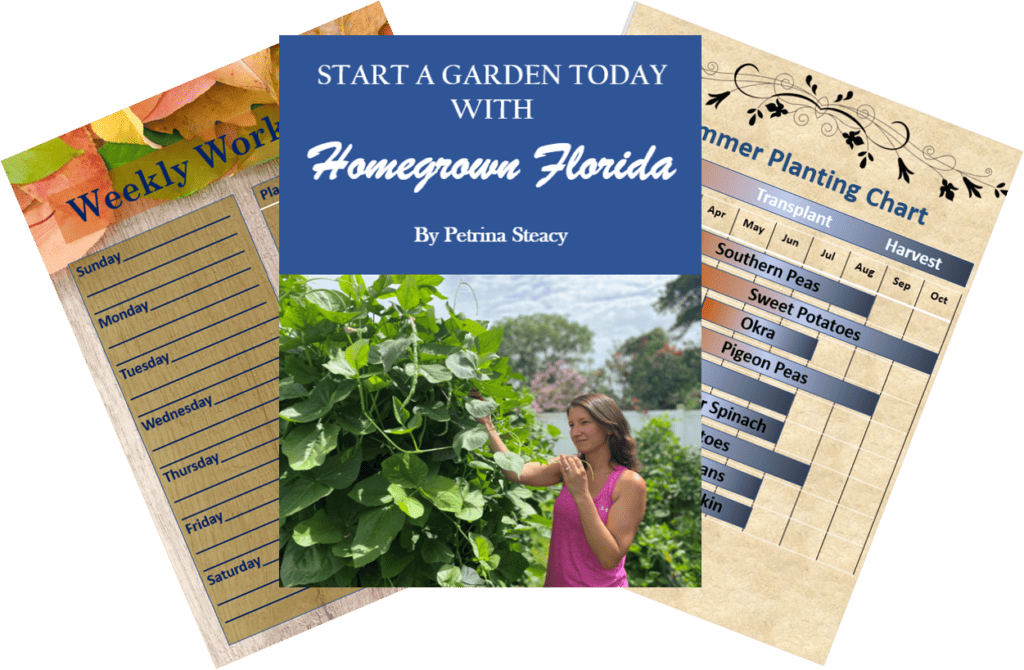Last Updated on January 18, 2024 by Homegrown Florida
As we officially step into the winter season, you might be surprised to learn that there’s still a plethora of time to grow delicious vegetables in this pleasant weather. Whether you’re in West Central Florida like me or another warm climate, there are plenty of options for your December garden. Every month, I break down the plants I’m starting from seed and share special tips. Stick around until the end for this month’s exclusive tip. Let’s dive into the winter gardening adventure!
Winter Gardening in Warm Climates:
I reside in West Central Florida, in growing zone 9A. However, the tips I’ll be sharing are applicable to various warm weather climates, including Florida, Arizona, Texas, and California. Let’s focus on the vegetables that thrive in this prime growing season.
Cold-Hearted Veggies to Start from Seed:
- Arugula: A spicy lettuce blend perfect for sandwiches and salads.
- Beets: Great for pickling and canning.
- Broccoli: A fresh and addictive vegetable.
- Brussels Sprouts: Tiny cabbages with a delightful top.
- Cabbage: Ideal for coleslaw or sauerkraut.
- Carrots: A family favorite with various colors and sizes.
- Cauliflower: A new venture for me this year; excited to learn!
- Celery: A slow-growing plant that thrives in cool weather.
- Chinese Cabbage: Varieties like bok choy and pak choy are excellent salad substitutes.
- Collards: A Southern favorite.
- Kale: Grows all season and transforms into a mini tree.
- Kohlrabi: A personal favorite, great raw or cooked.
- Lettuce: Thousands of varieties, from butter crunch to Romaine.
- Mustard: Thrives when lettuce won’t and adds a spicy kick.
- Onions (Bunching): Continuously regrows for green onions.
- Peas: shelling peas, snow peas, and traditional snap peas.
- Potatoes: Traditional whites and reds.
- Radish: Adds a spicy kick to salads.
- Spinach: Tricky in warm climates but worth planting.
- Swiss Chard: Surprisingly resilient in hot weather.
- Turnips: An excellent alternative to potatoes.

December Gardening Projects:
- Planting Garlic: Ensure you verilize your garlic by placing it in the refrigerator for 6 to 12 weeks. If you didn’t start earlier, look to purchase pre-vernalized garlic.
- Transitioning Warm Season Crops: As cooler weather sets in, remove tomatoes, cucumbers, squashes, and beans. Harvest immature winter squashes as a zucchini substitute or ripen them indoors. If frost is approaching, pull all fruit, even if not fully matured. Preserve them through canning or freezing.
- Succession Planting: Plan to replace warm-season crops with cool-season ones. Remove any leafy greens starting to bolt.
Special Tip of the Month:
Start planning your spring garden now! January and February are prime times for longer-growing crops like peppers, tomatoes, and winter squash. Draft a quick garden design, considering existing cool-season plants like garlic and onions. Also, review your seed inventory and reorder as needed to avoid last-minute disappointments. Don’t forget about unique items like seed potatoes that can sell out quickly.

[mc4wp_form id=165]



